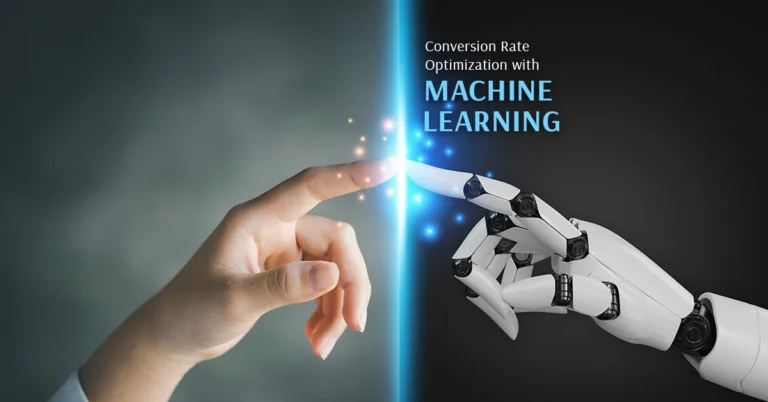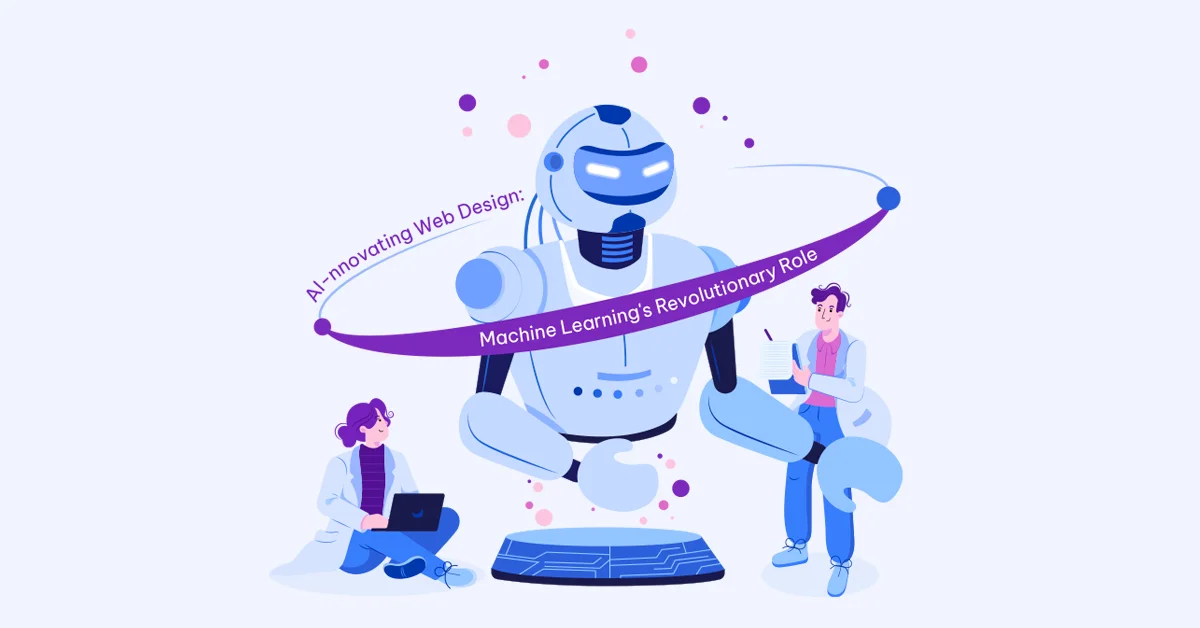
AI and Web Design: A Match Made in Cyberspace
In the ever-evolving digital landscape, the fusion of AI and Web Design has sparked a revolution, reshaping the way websites are conceived, designed, and experienced. By 2021, 73% of companies were investing in AI technology, with web development being a significant area of application. This substantial investment underscores the pivotal role of AI in shaping the future of revolutionising web design.
The integration of artificial intelligence (AI) into web design marks a significant paradigm shift in the digital landscape. AI’s ability to analyse user behaviour, generate personalised content, and optimise user experiences is revolutionising the way websites are conceptualised, designed, and operated. The AI software market is expected to grow to over $22 billion by 2025, signifying a shift from traditional methods to more automated, AI-driven approaches.
Web designers are now equipped with AI tools that simplify the design process, accurately predict user behaviour, and personalise the user experience. These advancements enable designers to focus on creativity and innovation while enhancing the digital landscape. The seamless integration of Machine Learning algorithms empowers designers to craft creative layouts and analyse user data for personalised experiences.
The marriage between AI and web design is not just about efficiency; it’s about unlocking unprecedented opportunities to streamline processes, enhance creativity, optimise user interactions, and save time and money in the website design process.
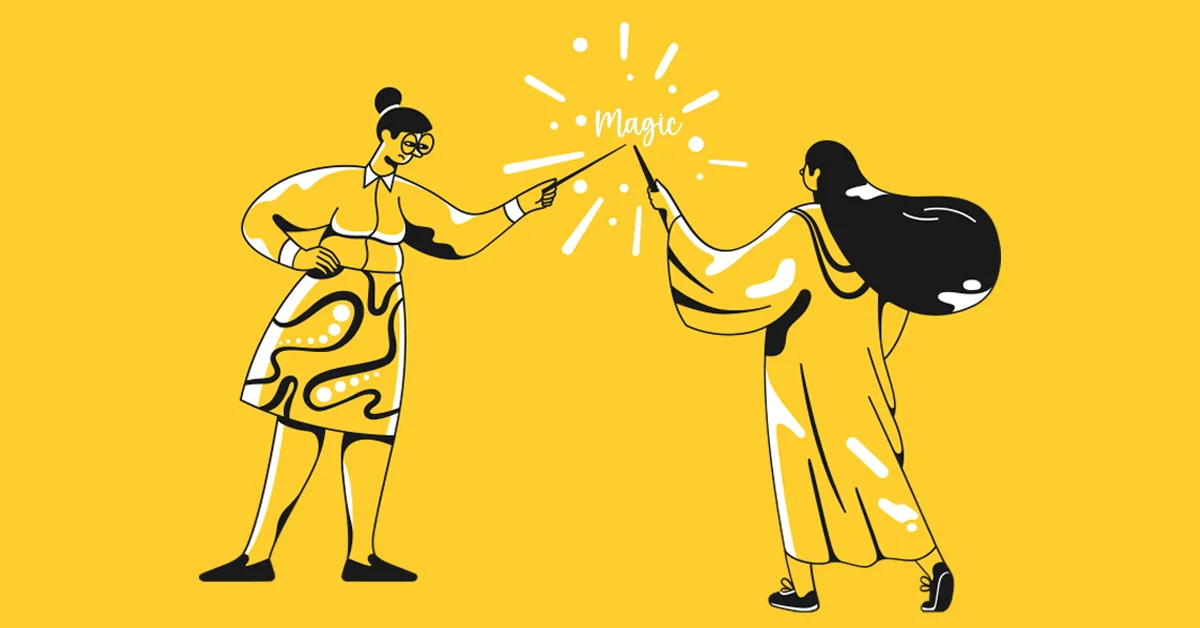
The Magic Behind AI's Role in Revolutionising Web Design
As the digital realm continues to evolve, the fusion of AI and Web Design has ushered in a new era of innovation, fundamentally transforming the way websites are conceptualised and experienced. The seamless integration of AI tools empowers designers to unleash their creativity while optimising user interactions, resulting in a revolutionary paradigm shift.
AI: The Artist and the Analyst
AI serves as both an artist and an analyst in the realm of web design. By leveraging AI-powered tools, designers can craft creative layouts that captivate users from the moment they land on a webpage. These tools automate routine tasks such as resizing images or optimising code, allowing designers to focus on more critical aspects of the project. This not only enhances efficiency but also fosters an environment where creativity flourishes without being hindered by mundane technicalities.
Moreover, AI tools play a pivotal role in analysing user data to deliver personalised experiences. By scrutinising users’ behaviour, preferences, and interaction patterns, these tools provide valuable insights that enable designers to tailor content and recommendations based on individual user profiles. This level of personalization elevates user engagement and satisfaction, setting a new standard for web experiences.
Machine Learning: The Secret Sauce
Machine Learning acts as the secret sauce behind AI’s transformative impact on web design. Through predictive design capabilities, Machine Learning algorithms effectively read and anticipate user preferences and behaviours. This enables websites to dynamically adjust content placement, layout, and functionality based on individual user preferences, creating a tailored experience for each visitor.
Furthermore, dynamic content generation powered by Machine Learning ensures that websites remain fresh and relevant. By analysing user behaviour, these algorithms facilitate real-time adjustments to website content – for instance, showcasing products or services based on a user’s past purchases or browsing patterns. This dynamic adaptation not only enhances user engagement but also streamlines the path to desired outcomes.
In essence, AI’s ability to automate repetitive tasks while providing personalised experiences is revolutionising web design practices. By harnessing the power of AI and Machine Learning, web designers are at the forefront of a digital revolution that prioritises creativity and individualised interactions.
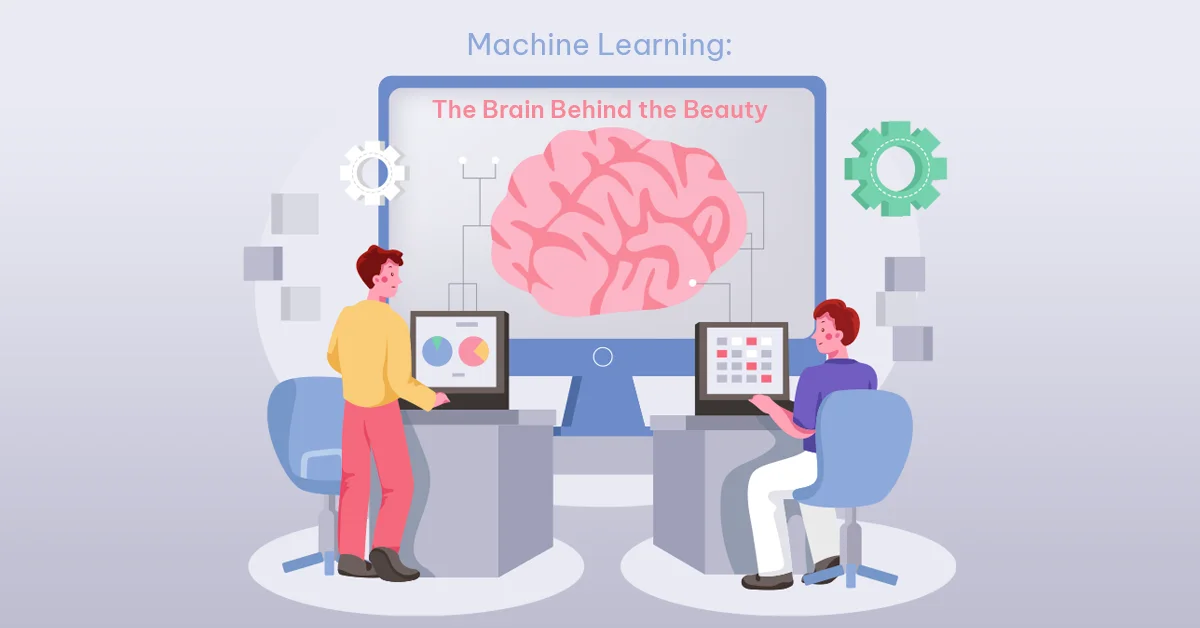
Machine Learning: The Brain Behind the Beauty
The Nuts and Bolts of Machine Learning in Web Design
When delving into the intricate workings of Machine Learning in web design, it becomes evident that algorithms play a pivotal role in shaping the digital landscape. These intelligent algorithms act as the driving force behind the seamless integration of AI tools, revolutionising the way websites are conceptualised and experienced.
The utilisation of sophisticated algorithms lies at the core of Machine Learning’s impact on web design. These algorithms meticulously analyse user data, interaction patterns, and preferences to glean valuable insights that inform the creation of personalised user experiences. By deciphering this wealth of information, designers can tailor content and recommendations based on individual user profiles, thus enhancing user engagement and satisfaction.
Furthermore, the transformation process from raw data to captivating design is where Machine Learning truly shines. Through predictive analysis capabilities powered by ML algorithms, websites can now tailor user experiences based on individual preferences or browsing habits. This dynamic adaptation ensures that users are presented with content that resonates with their unique interests, thereby creating visually appealing and user-friendly websites.
Incorporating machine learning into web design not only enhances the functionality of websites but also provides personalised user experiences. This transformative potential is exemplified through case studies illustrating how AI tools have revolutionised web development by empowering designers to create more dynamic, user-centric websites.
Case Studies: Machine Learning Masterpieces
Website Makeovers: Before and After
- AI-Powered Personalization: A case study showcasing a website’s transformation before and after integrating AI-powered personalization techniques. The implementation resulted in a significant uplift in user engagement metrics, demonstrating the power of tailored content delivery.
- Dynamic Content Generation: Another case study highlighting how dynamic content generation fueled by Machine Learning algorithms led to a remarkable enhancement in website traffic and conversion rates. The before-and-after comparison vividly illustrates the impact of personalised experiences on user interactions.
Success Stories: When AI Meets Creativity
- Tailored User Experiences: A success story underscoring how AI-driven personalization strategies elevated a website’s performance by catering to individual user preferences. The seamless fusion of creativity with machine learning principles resulted in an unparalleled level of user satisfaction.
- Optimised Interactions: An insightful case study detailing how AI-infused web design transformed standard interactions into optimised, personalised experiences. By harnessing machine learning capabilities, designers were able to craft innovative solutions that captivated users while achieving business objectives.
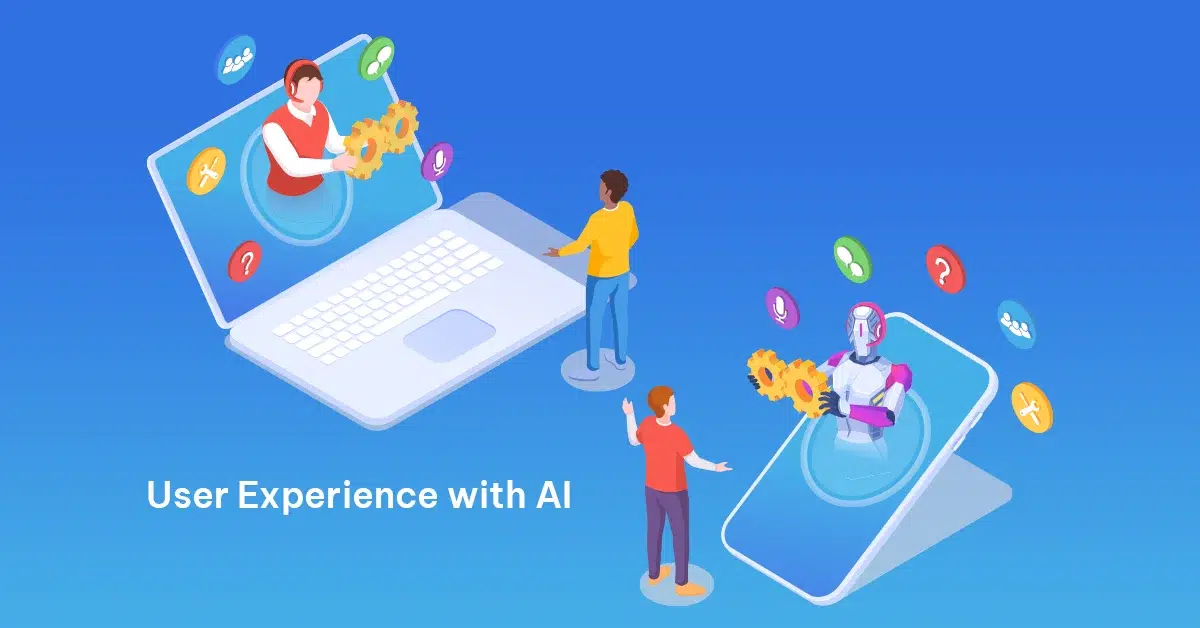
Revolutionising User Experience with AI
In the realm of web design, AI is spearheading a revolution in user experience, redefining the way individuals interact with digital platforms. This transformative impact is driven by AI’s unparalleled ability to personalise and enhance user interactions, ultimately shaping a new era of web experiences.
Personalization: The Key to Users' Hearts
Personalization lies at the heart of AI-infused web design, offering tailored experiences that resonate with individual users. Through AI-powered algorithms, websites can provide tailored recommendations based on users’ preferences and behaviour, serving as the ultimate shopping assistant.
According to surveys conducted by Responsly and Zonka Feedback, AI-powered surveys have become a valuable tool for businesses looking to boost customer satisfaction. These dynamic surveys adapt based on respondent answers, providing a personalised experience and reducing survey fatigue. The integration of AI algorithms enables websites to analyse user behaviour and deliver personalised experiences, significantly improving user satisfaction and conversion rates.
Moreover, interactive features empowered by AI are engaging users like never before. By leveraging AI capabilities, websites can incorporate interactive elements that captivate users and foster meaningful interactions. This approach not only enhances user engagement but also sets a new standard for immersive web experiences.
Accessibility and Inclusivity: AI's Noble Mission
AI’s impact extends beyond personalization; it encompasses a noble mission of fostering accessibility and inclusivity in web design. By breaking barriers through innovative solutions, AI is making the web welcoming for all. Voice commands and other innovations are transforming the digital landscape into an inclusive space where individuals of diverse backgrounds can navigate seamlessly. These advancements align with the evolving ethos of inclusivity in web design, ensuring that every user feels valued and empowered when interacting with digital platforms.
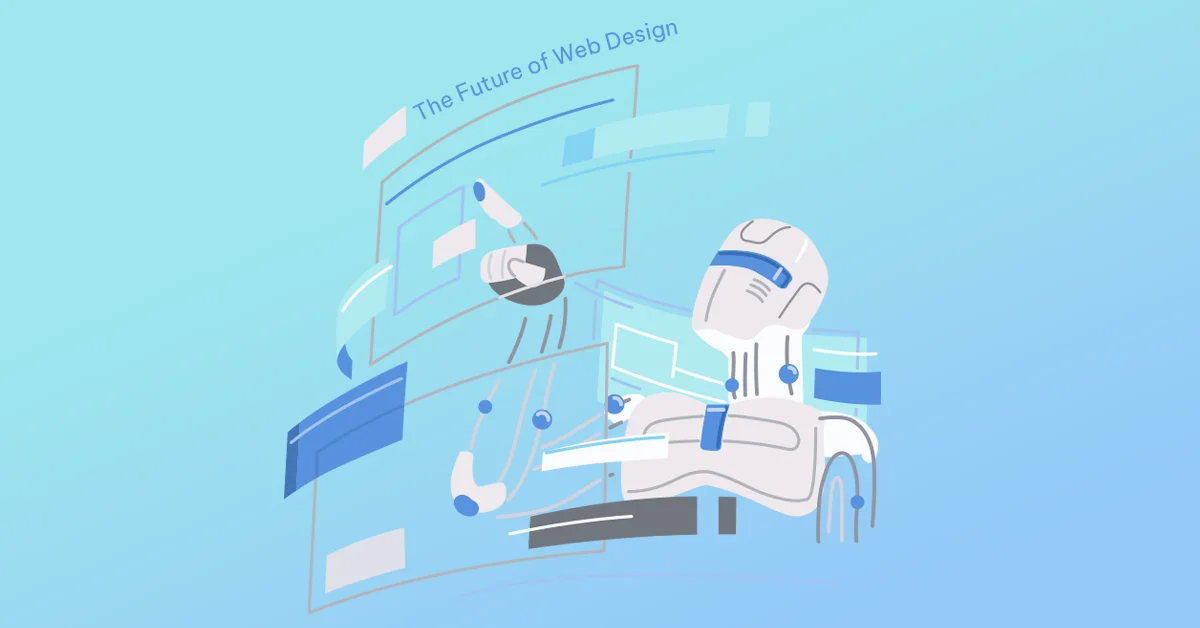
The Future is Now: AI's Ongoing Impact on Web Design
What's Next: Peeking into the Crystal Ball
As the symbiotic relationship between AI and web design continues to evolve, the future holds a myriad of possibilities for their ongoing collaboration. Industry experts emphasise that the potential of AI in web development and design is impressive, promising to revolutionise the way websites are created, maintained, and interacted with in the future. However, it’s important to acknowledge that its applications are yet to be fully realised. While AI will become ever more powerful and valuable for these industries as technology evolves, there are challenges that need to be navigated.
Ivan Maximus, an expert in AI and web design, highlights that using AI in web development and design has its drawbacks. These include potential complexities in implementation, scalability limitations, and customization constraints. Despite these challenges, AI isn’t just used for completing repetitive tasks; it also enhances the creative capabilities of web designers. AI-powered design tools can help create better-looking websites more quickly and efficiently.
One significant application of AI in web development is the integration of AI-powered chatbots. These chatbots enhance customer service by providing real-time, personalised responses to user queries, thereby elevating user experiences across digital platforms.
Challenges and Opportunities: Navigating the Future
Buenito predicts unprecedented opportunities for innovation and creativity in the future of web design with AI at its core. However, she emphasises that embracing this new technology comes with both challenges and opportunities.
The industry’s response to embracing AI technology inspires further exploration into how this innovative tool can be leveraged effectively. It’s evident that while AI might automate some tasks, it will not outright replace designers. The collaborative potential between human creativity and AI-driven efficiency presents a compelling narrative for navigating the future of web design.
In navigating this path forward, learning from past experiences while adapting to new technologies will be crucial for success. Collaboration and innovation will serve as guiding principles as the web design community embraces change together towards tomorrow.
By embracing these challenges head-on while capitalising on the opportunities presented by AI in web design, designers can pave the way for an exciting era of digital creativity and user-centric experiences.


